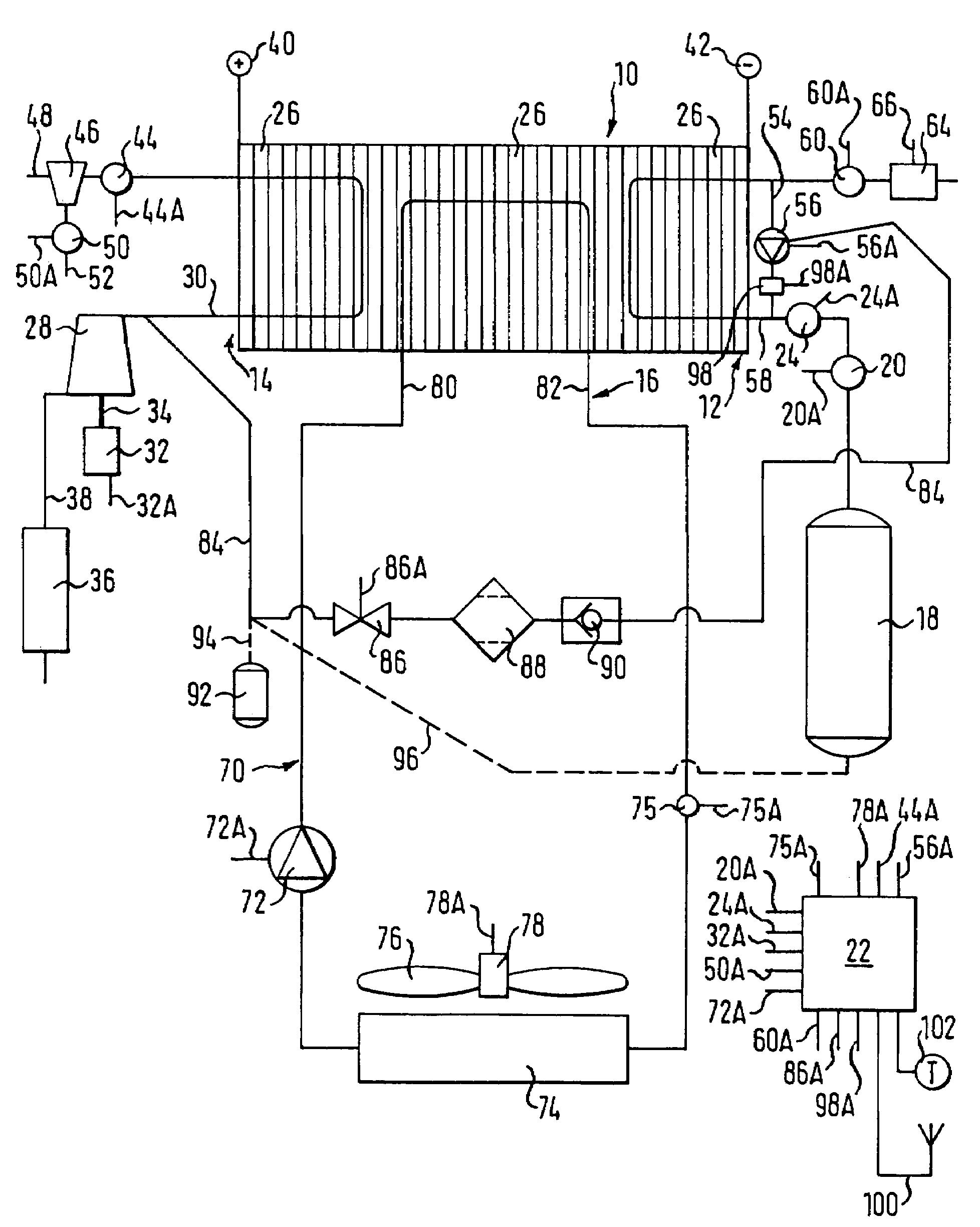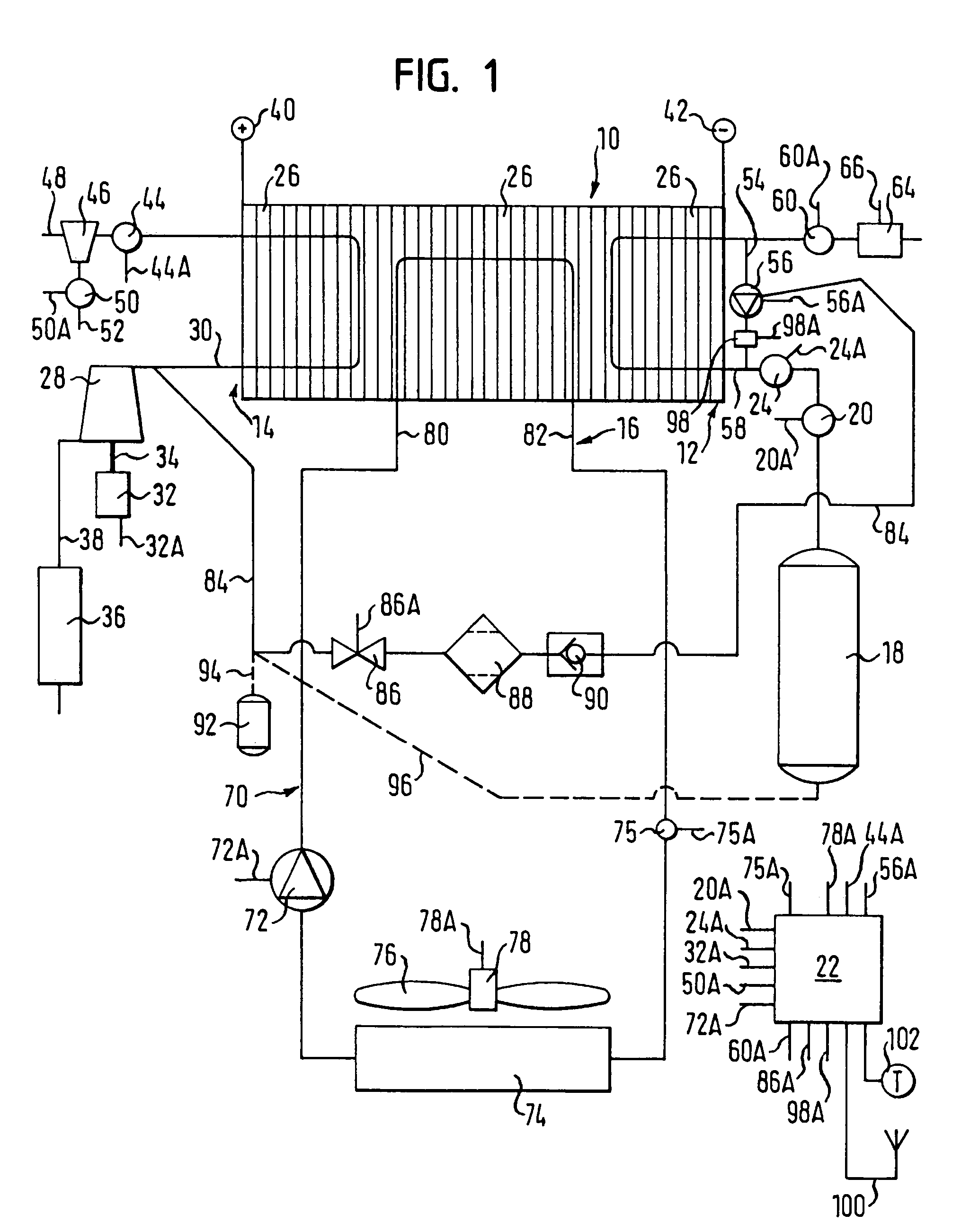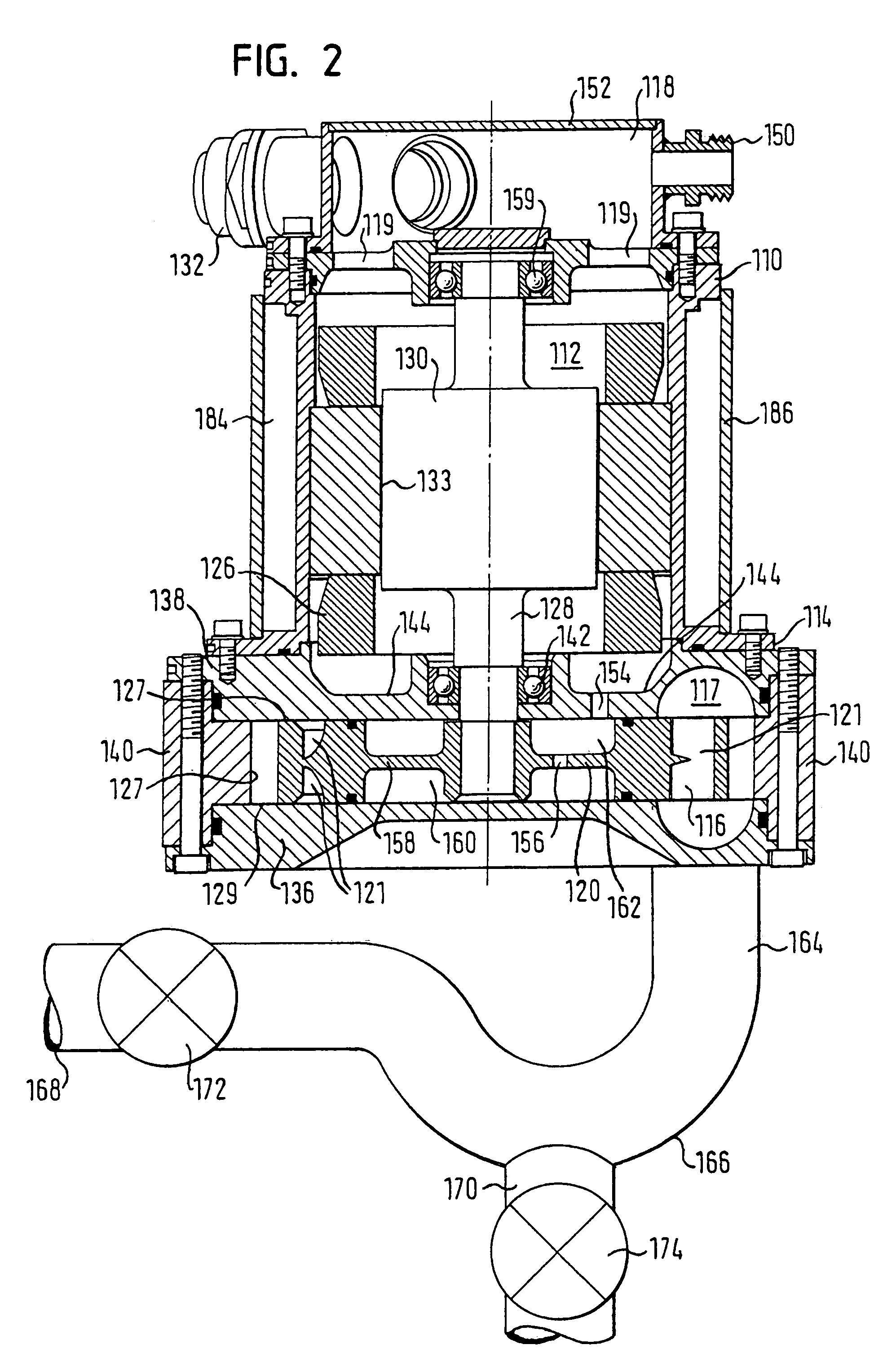Operation method and purging system for a hydrogen demand/delivery unit in a fuel cell system
a technology of hydrogen demand and purging system, which is applied in the direction of liquid fuel engine, cell components, electrochemical generators, etc., can solve the problems of systemic accumulation of condensate, difficult sealing, and similar problems, and achieve the effect of preventing the operation or damage of certain components
- Summary
- Abstract
- Description
- Claims
- Application Information
AI Technical Summary
Benefits of technology
Problems solved by technology
Method used
Image
Examples
Embodiment Construction
[0031]FIG. 1 shows a schematic representation of a fuel cell system consisting of a fuel cell stack 10 with an anode side 12 and a cathode side 14. The fuel cell system also has a coolant cycle 16 which is filled with an insulating coolant which, depending on where the fuel cell system is operated, does not freeze at the maximally anticipated negative temperatures there, i.e. does not pass into the solid state. Instead of using a coolant in liquid form the fuel cell system can also be provided with air cooling.
[0032]On the anode side 12, a fuel such as hydrogen-rich synthetic gas is stored in a low-temperature storage container 18 or in another suitable pressurized container. The reference number 20 denotes a valve which serves to reduce the pressure in the storage container 18 to a lower feed pressure. The valve 20 is governed by a control unit 22 through conduit 20A. In order to simplify the representation the curve of the control conduit 20A between the valve 20 and the control 2...
PUM
| Property | Measurement | Unit |
|---|---|---|
| temperatures | aaaaa | aaaaa |
| temperature | aaaaa | aaaaa |
| time | aaaaa | aaaaa |
Abstract
Description
Claims
Application Information
 Login to View More
Login to View More - R&D
- Intellectual Property
- Life Sciences
- Materials
- Tech Scout
- Unparalleled Data Quality
- Higher Quality Content
- 60% Fewer Hallucinations
Browse by: Latest US Patents, China's latest patents, Technical Efficacy Thesaurus, Application Domain, Technology Topic, Popular Technical Reports.
© 2025 PatSnap. All rights reserved.Legal|Privacy policy|Modern Slavery Act Transparency Statement|Sitemap|About US| Contact US: help@patsnap.com



